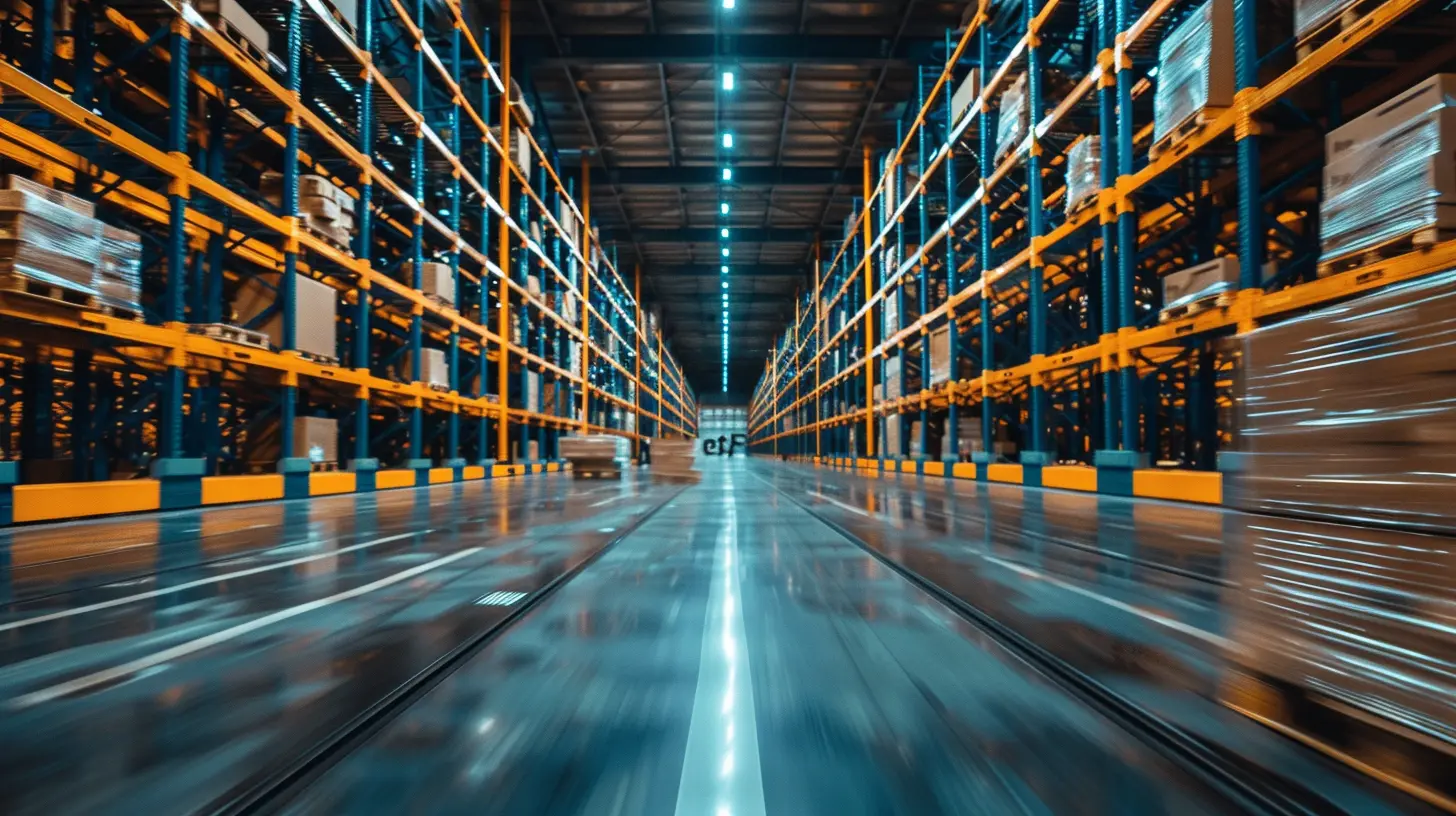The Importance of Load Speed for E-Commerce Stores
29 July 2025
In today’s fast-paced world, patience is becoming a rare commodity. Think about it—when was the last time you willingly waited more than a few seconds for a webpage to load? Odds are, if a website took its sweet time, you bailed out and found another one that worked more efficiently. Now imagine that scenario happening on your e-commerce store. Ouch, right? That’s why load speed is not just a technical detail—it’s a make-or-break factor for your online business.
As online shoppers, we’ve become accustomed to instant gratification. We expect e-commerce websites to be lightning-fast, responsive, and frictionless. But how does load speed impact your e-commerce store? It’s not just about providing a good user experience (although that’s a biggie). Load speed directly affects conversions, SEO rankings, and your overall bottom line. If your online store is dragging its feet, you’re losing customers—and money—by the second. Let’s dive deeper into why load speed matters so much and how you can ensure your store stays quick as a whip.
Why Load Speed Matters for E-Commerce Stores
Imagine walking into a physical store, and the doors creak open painfully slowly, the lights flicker before turning on, and the cash register takes forever to process your payment. Would you stick around? Probably not. The same logic applies to e-commerce websites. Load speed is the virtual equivalent of having a well-oiled storefront that welcomes customers with open arms. But it goes even deeper than just first impressions.1. First Impressions Count (A Lot)
Your website’s load time is the very first interaction potential customers have with your brand. According to research by Google, 53% of mobile users will leave a website if it takes longer than three seconds to load. Three seconds! That’s faster than the time it takes to microwave popcorn. If your site is slow, not only are you losing that visitor, but you’re also leaving them with a bad impression of your brand.2. Load Speed Impacts Conversions
Think of load speed as the foundation of your sales funnel. A slow-loading website is like a leaky bucket—customers pour in at the top, but many leak out before completing a purchase. Research backs this up, too. A study by Akamai showed that a 100-millisecond delay in website load time can reduce conversion rates by 7%. That may not sound like much, but when applied to thousands of potential sales, the revenue lost is staggering.Faster load speeds, on the other hand, keep customers engaged. The easier and quicker it is for them to browse, add items to their cart, and check out, the higher your chances of making a sale. Think of it like a grocery store express checkout lane—no one wants to stand in line when they can zip through and be on their way.
The SEO Connection: Why Google Cares About Your Load Speed
If your e-commerce store is slow, it’s not just customers who get frustrated—Google isn’t happy either. That’s bad news for your site’s SEO.1. Page Experience is a Ranking Factor
Google has openly stated that page experience is a critical ranking factor, and guess what’s at the top of the “experience” list? Yep, load speed. Google’s Core Web Vitals metrics measure aspects like load time, interactivity, and visual stability. If your site fails on these metrics, good luck climbing up the search engine results page (SERP).When your site loads quickly, Google deems it more user-friendly and is more likely to rank it higher. Better rankings mean more organic traffic, which translates to more potential customers.
2. Bounce Rates and SEO
Bounce rate refers to the percentage of visitors who leave your site after viewing only one page. A slow-loading site practically invites people to bounce—which, in turn, signals to Google that your website isn’t providing a good user experience. High bounce rates can severely impact your rankings, pushing your site further down in search results. It’s a vicious cycle: slow load speed leads to higher bounce rates, which lowers your SEO ranking, which reduces your traffic, and so on.
Mobile Users: The Engine of E-Commerce
Did you know that over 60% of e-commerce traffic comes from mobile devices? (And that number is only growing.) Mobile users are even less forgiving when it comes to slow load times. They expect snappy, responsive websites that don’t waste their data or patience.A slow site on mobile not only frustrates users but can also lead to abandonment. According to Google, mobile sites should ideally load in under three seconds—but the reality is that most take around 15 seconds. If you’re lagging, you’re practically handing your competitors your customers on a silver platter.
How to Improve Your E-Commerce Store’s Load Speed
Okay, so we’ve established that load speed is critical. But what can you actually do about it? The good news is that improving your website’s speed isn’t rocket science—it just requires some strategic tweaks.1. Optimize Images
Images are often the biggest culprits behind slow load times. Sure, high-quality visuals are essential for an e-commerce store—no one’s buying a product they can barely see—but they shouldn’t come at the cost of your speed. Compress your images to reduce their file size without sacrificing quality. Tools like TinyPNG or ImageOptim can help with this.2. Use a Content Delivery Network (CDN)
A CDN is like a team of relay runners for your website. Instead of having one server handle all your traffic, a CDN distributes your content across multiple servers around the world. This ensures that users can access your site from the server closest to them, speeding up load times significantly.3. Enable Browser Caching
Browser caching stores copies of your website’s files on users’ devices so that they don’t have to re-download everything every time they visit. This speeds up the load time for returning visitors, giving them a smoother experience.4. Minimize HTTP Requests
Every element on your webpage—images, scripts, stylesheets, etc.—requires an HTTP request to load. The more requests your site makes, the slower it gets. Aim to streamline your site’s design by reducing unnecessary elements and combining files where possible.5. Upgrade Your Hosting
Sometimes, the problem isn’t your website—it’s your hosting provider. If you’re on shared hosting, you’re essentially competing for resources with a bunch of other websites. Upgrading to a dedicated or cloud-based hosting solution can significantly boost your load speed.The Cost of a Slow Website: It’s More Than You Think
Still wondering if a few seconds really make that much of a difference? Let’s put it into perspective. Amazon reported that a one-second delay in page load time could cost them $1.6 billion in sales annually. Now, you’re probably not Amazon, but the principle remains the same. Every second your e-commerce store lags, you’re leaving money on the table.Beyond lost sales, a slow website can damage your brand’s reputation. People talk, and in the age of social media, bad experiences can spread like wildfire. If word gets out that your site is slow or unreliable, attracting new customers will become a Herculean task.
Final Thoughts: Speed Matters More Than Ever
In the e-commerce world, load speed isn’t just a technical detail—it’s a critical business metric. It impacts everything from first impressions and user experience to conversion rates, SEO rankings, and even your brand’s reputation. In short, a slow website isn’t just frustrating—it’s expensive.But here’s the good news: improving your load speed is entirely within your control. With the right tools, strategies, and optimizations, you can ensure your site stays fast, responsive, and ready to meet the demands of today’s impatient shoppers. Remember, in the race to win customers online, speed isn’t just an advantage—it’s a necessity.
all images in this post were generated using AI tools
Category:
E CommerceAuthor:

Susanna Erickson
Discussion
rate this article
1 comments
Quincy McElroy
Load speed isn't just a nice-to-have; it's the VIP pass to e-commerce success! If your site lags behind, so will your sales. In a world where attention spans are shorter than a TikTok video, don’t let slow speeds turn customers into ghosts. 🚀💨
August 6, 2025 at 11:41 AM

Susanna Erickson
Absolutely! Load speed is crucial for retaining customers and boosting sales in today’s fast-paced digital world. Every second counts!


